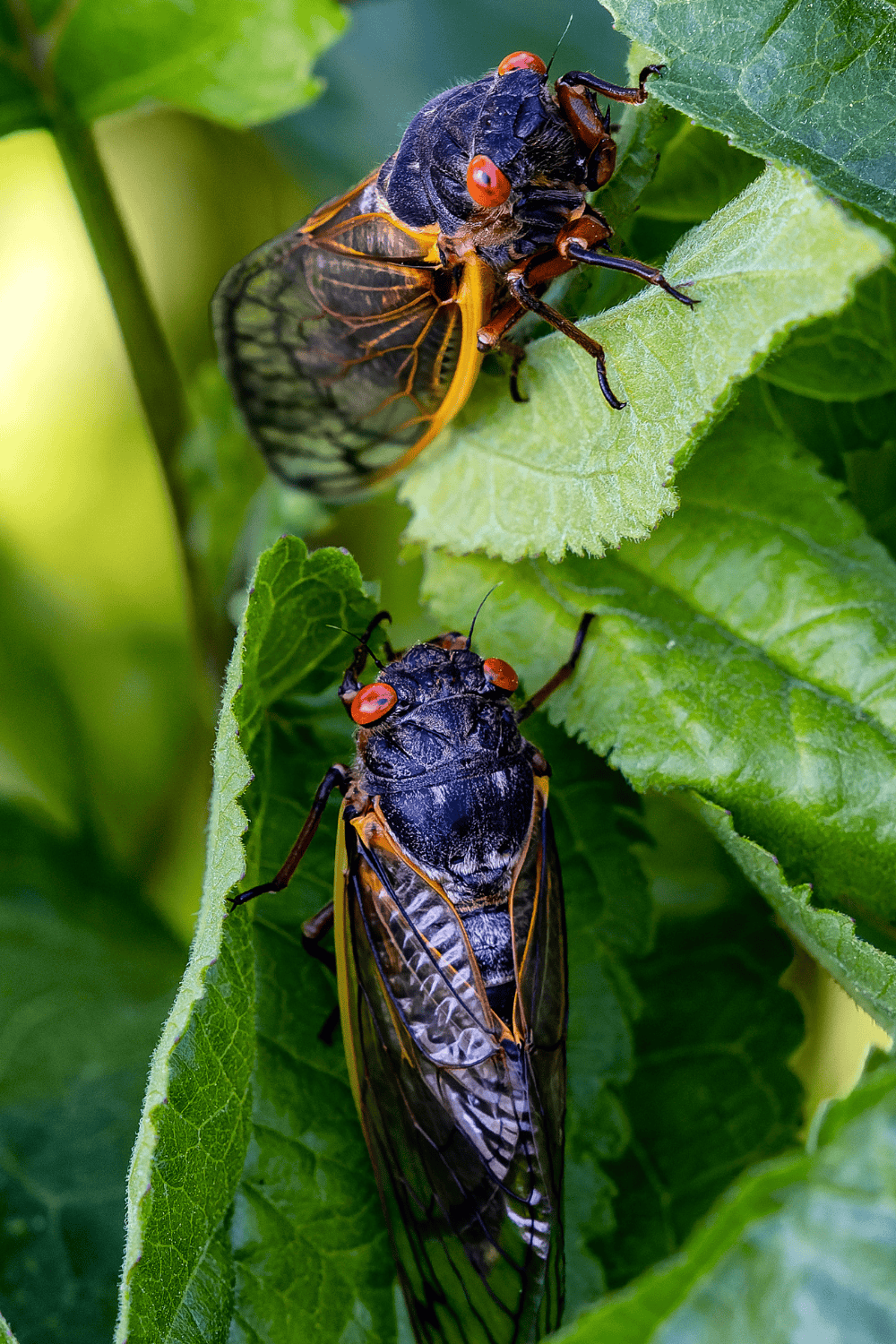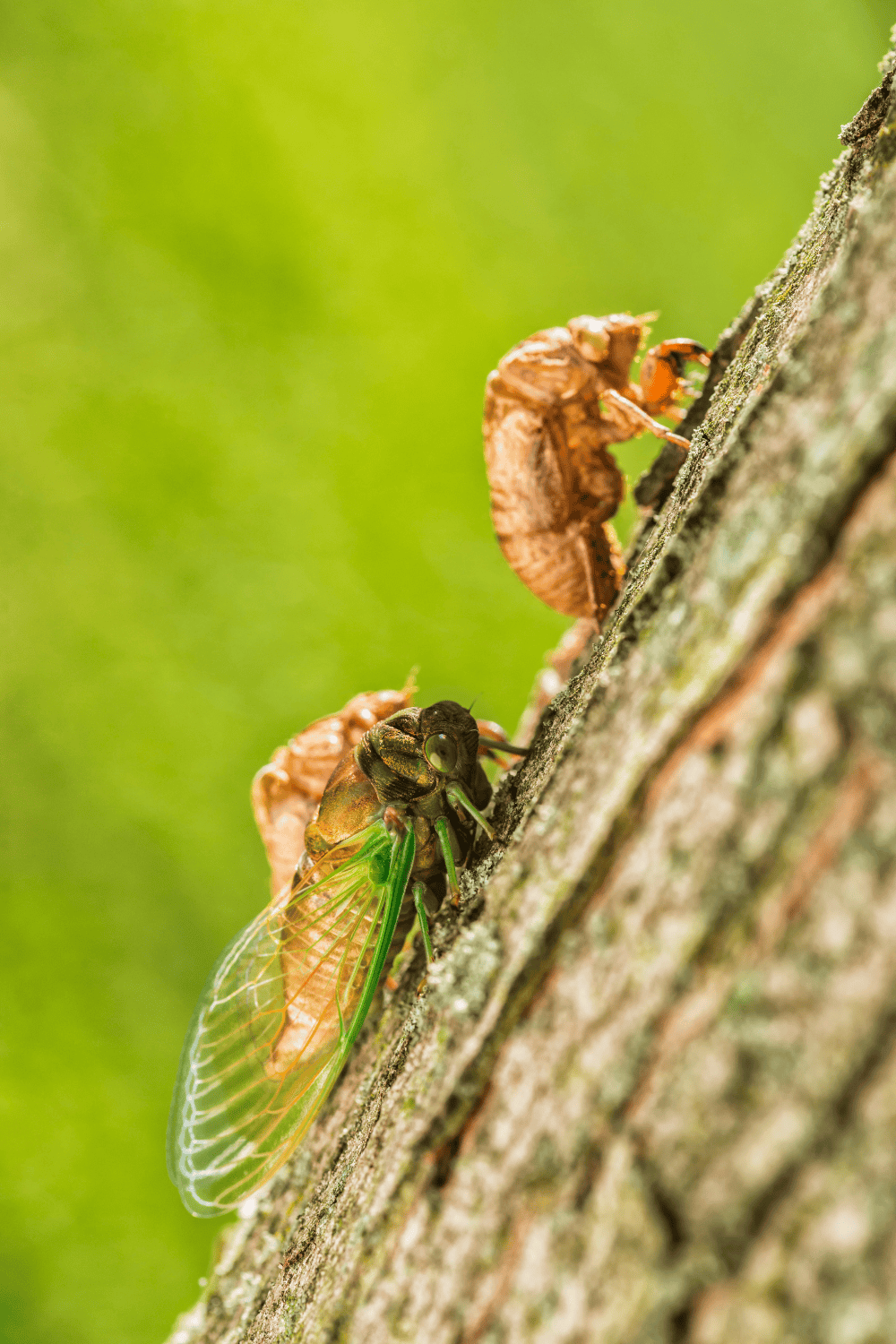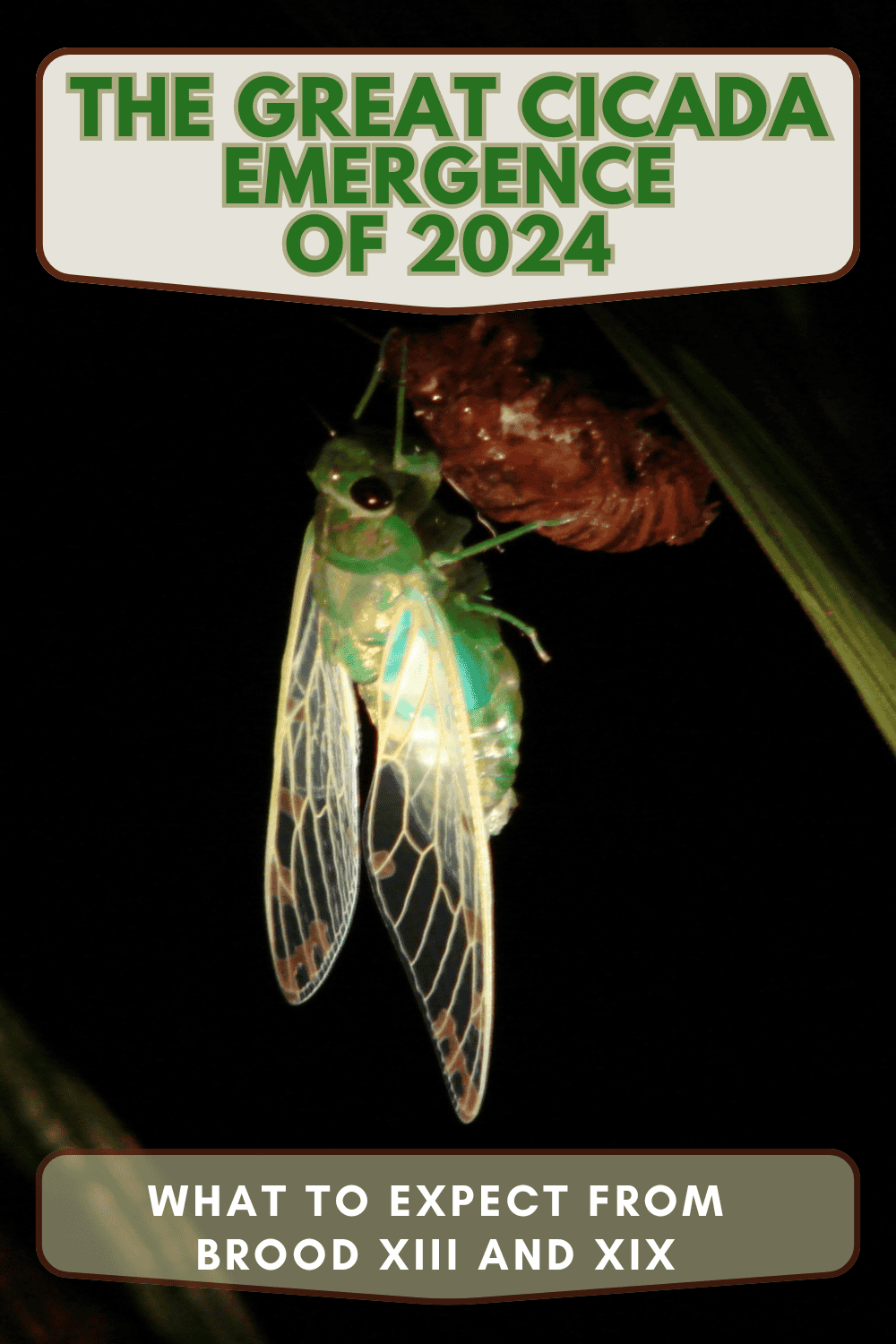Every 17 years, certain regions across the United States witness a natural phenomenon that captivates and, for some, vexes local residents. It's no other than the emergence of Brood XIII cicadas.
Meanwhile, Brood XIX, also known as the Great Southern Brood, follows a 13-year cycle.
If there's anything special about 2024, Brood XIII and XIX will make their return, transforming quiet neighborhoods into buzzing hubs of insect activity.

When and Where to Expect the Cicada Emergence
Brood XIII, also known as the Northern Illinois Brood, is set to emerge in the spring of 2024. This event is primarily expected to affect parts of Illinois, Iowa, and Indiana.
The emergence typically begins when the soil temperature approximately eight inches underground reaches about 64 degrees Fahrenheit, usually by late May or early June.
The spectacle can be particularly intense in wooded suburban areas where cicadas have previously laid their eggs. Cities like Chicago in Illinois and smaller communities across the affected states will likely experience significant cicada activity.
Brood XIX primarily affects the Southern United States. And yet, another interesting phenomenon occurs when their cycle slightly overlaps with others, which might happen in some parts of Illinois.
The Scientific Significance of Co-Emergence
Historically, overlaps of these magnitudes are exceptional, especially as the last time both Brood XIII and XIX emerged at the same time in the same geographic region was in 1803 or 221 years ago.
The possible simultaneous appearance of Brood XIII and XIX in central Illinois is not just a curiosity—it provides invaluable insights into cicadas' behavior, survival strategies, and evolutionary pathways.
No wonder the 2024 emergence will be exciting for residents and researchers in affected areas. Scientists are particularly interested in the following aspects:
- Predator Response: The overwhelming number of cicadas can saturate predators, but how this dynamic plays out with two different broods emerging at once is of great ecological interest.
- Genetic Diversity and Interbreeding: While interbreeding between broods is rare, the co-emergence allows researchers to study potential genetic exchanges and their implications for future cicada generations.
- Environmental Impact: The effect of such a dense population on local flora and fauna will include potential benefits such as increased nutrient cycling due to the decomposition of cicada biomass.
Duration of the Cicada Presence
Once they begin to emerge, cicadas will be part of daily life for approximately four to six weeks. The cicadas will mate, lay eggs, and die during this period.

The new generation of cicadas will then burrow underground, not to be seen again for another 17 years.
However, the duration of cicada presence may vary slightly between broods as local climatic conditions also influence it.
Brood XIII, for instance, might emerge a little earlier in the season and could have a shorter or longer surface activity period depending on weather patterns like temperature and rainfall in their specific regions.
Similarly, Brood XIX might follow a different timeline based on the same factors.
Understanding Why Cicadas Emerge
This cyclical event is part of the cicadas' long-term survival strategy. By synchronizing their emergence every 17 or 13 years, cicadas overwhelm predators with their sheer numbers, ensuring that enough of them survive to reproduce.
This occurrence, known as predator satiation, means that despite the large number of cicadas becoming food for birds, mammals, and other insects, many will survive to continue their lifecycle.
Preparations and Considerations
The emergence of cicadas can have several impacts on residents and gardeners. Here’s what to expect and how to prepare:
For Homeowners
- Noise: Prepare for several weeks of loud buzzing sounds as male cicadas call to attract mates. This noise can reach up to 100 decibels, equivalent to a motorcycle nearby.
- Debris: After cicadas mate and die, their bodies can accumulate, especially under trees. Regularly cleaning up these areas can prevent unpleasant smells and keep your yard tidy.
For Gardeners
- Young Trees: Cicadas pose the most significant risk to young trees. The females lay eggs in small branches, causing "flagging" or breakage. Protect young trees by covering them with netting or cheesecloth.
- Pesticides: Avoid using pesticides to control cicadas. They are ineffective due to the cicadas’ vast numbers and can harm beneficial insects and local wildlife.
- Planting: Delay any significant landscaping or planting of new trees until after the cicadas have disappeared.
Implications of the Co-Emergence
For gardeners and nature enthusiasts in Illinois, the co-emergence provides a front-row seat to this rare natural spectacle. Here’s how to make the most of it and protect your green spaces:
- Dual Brood Preparation: Adjust gardening schedules to accommodate the unique challenges of two broods. This might include reinforcing protections for young trees as suggested in the previous section and considering the timing of planting new vegetation.
- Educational Opportunities: Engage with local nature groups or universities conducting studies or giving talks about the cicada emergences. This is a chance to contribute citizen science data and learn about these fascinating insects.
- Celebrating Biodiversity: Embrace this event as a celebration of biodiversity and the resilience of nature. Organize or participate in community events that focus on understanding and appreciating the ecological roles of cicadas.

General Tips:
- Embrace Nature: Consider this an opportunity to witness a rare natural event. Teach children about cicadas and their role in the ecosystem.
- Protection for Outdoor Events: If planning outdoor events, be aware that cicadas can be disruptive. Temporary covers or choosing locations away from heavily wooded areas can help.
- Vehicle Care: Keep cars in garages if possible, as cicadas can land on vehicles, and their bodies can clog filters or create a mess.
Gear Up for the Cicada Showcase of 2024!
The emergence of Brood XIII and Brood XIX is a fascinating example of nature’s clockwork and offers a unique opportunity to engage with the natural world.
Now that you know what to expect and how to prepare as residents in the affected areas, you can ensure that the 2024 cicada season is memorable for all the right reasons.
Whether you're a homeowner, a gardener, or a nature enthusiast, this upcoming cicada emergence is a not-to-be-missed natural spectacle.

